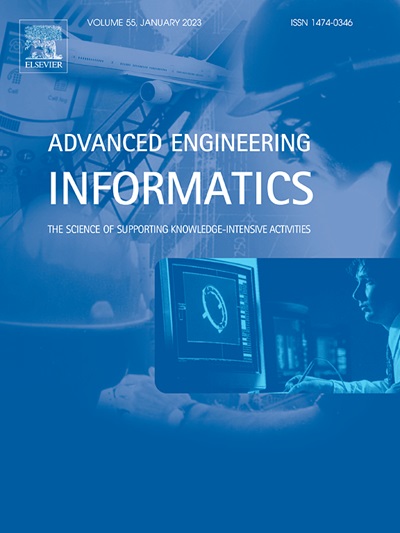Deep-learning-driven intelligent tool wear identification of high-precision machining with multi-scale CNN-BiLSTM-GCN
IF 8
1区 工程技术
Q1 COMPUTER SCIENCE, ARTIFICIAL INTELLIGENCE
引用次数: 0
Abstract
In high-precision machining, the inevitable tool wear will significantly affect the surface quality. Traditional tool wear modeling is complicated due to the complex mathematical reasoning process and the identification of numerous unknown parameters linked to the wear mechanism. Data-driven modeling for tool wear prediction can avoid the above issues but suffers from high-cost and low-efficiency because of amounts of expensive tool consumption and time-consumed experiments for generating the training dataset. To fill this gap, this study proposed an innovative approach to accurately identifying tool wear in high-precision machining effortlessly. Firstly an unsupervised Modified Toeplitz Inverse Covariance Clustering (MTICC) algorithm was first proposed to objectively categorize tool wear phase from multi-channel time-series data to break through traditional manual-experience-based division, whose effectiveness was validated by the well-designed experiments. Then, a hybrid deep learning model with a multi-scale CNN-BiLSTM-GCN and cross-attention structures was developed to deeply extract spatial–temporal features from multi-channel signals by first considering the interdependencies of the sensor network for higher accuracy. After hyperparameters optimization, features importance analysis was conducted to identify the most important features, which are “X-force”, “Y-force” and “Phase1 Active Power”, and the hyperparameters importance quantitatively analyze the contribution of CNN, BiLSTM, and GCN modules, respectively. Through the comparative studies, the proposed multi-scale CNN-BiLSTM-GCN model performed better with a weighted average F1 score of 0.987 than other models. The proposed model was finally employed on the intelligent IoT platform and successfully achieved the real-time identification of tool wear in the HPM process.
求助全文
约1分钟内获得全文
求助全文
来源期刊

Advanced Engineering Informatics
工程技术-工程:综合
CiteScore
12.40
自引率
18.20%
发文量
292
审稿时长
45 days
期刊介绍:
Advanced Engineering Informatics is an international Journal that solicits research papers with an emphasis on 'knowledge' and 'engineering applications'. The Journal seeks original papers that report progress in applying methods of engineering informatics. These papers should have engineering relevance and help provide a scientific base for more reliable, spontaneous, and creative engineering decision-making. Additionally, papers should demonstrate the science of supporting knowledge-intensive engineering tasks and validate the generality, power, and scalability of new methods through rigorous evaluation, preferably both qualitatively and quantitatively. Abstracting and indexing for Advanced Engineering Informatics include Science Citation Index Expanded, Scopus and INSPEC.
 求助内容:
求助内容: 应助结果提醒方式:
应助结果提醒方式:


